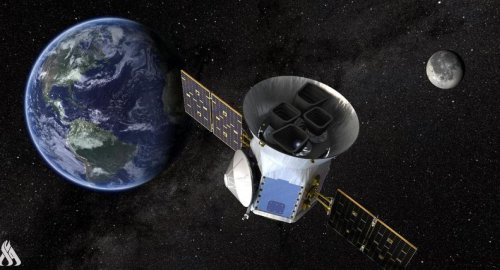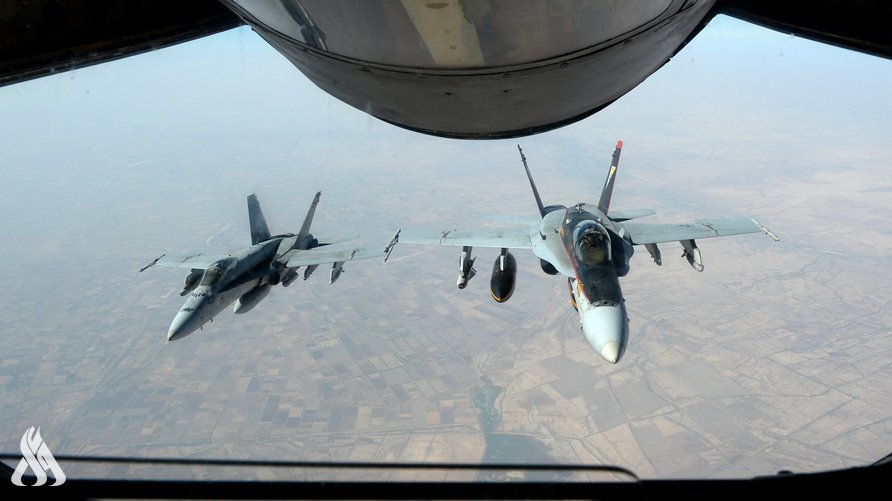
Russia launches three satellite deployment missions in one week

- 21-12-2022, 09:51
INA- SOURCES
All three of Russia’s major rockets — the Soyuz, Proton, and Angara — launched last week on missions to deploy a Russian navigation satellite, an Angolan communications spacecraft, and a top secret military spy payload.
The busy week of launches kicked off Oct. 10 with the liftoff of a Soyuz rocket from the Plesetsk Cosmodrome carrying a Russian Glonass navigation satellite. The Soyuz-2.1b launcher took off from Plesetsk, located about 500 miles (800 kilometers) north of Moscow, at 0252 GMT on Oct. 10 (10:52 p.m. EDT on Oct. 9), according to the Russian Ministry of Defense.
The launch occurred at 5:52 a.m. local time at Plesestk, or just before sunrise. The rocket’s expanding exhaust plume was lit up by the sun as the Soyuz climbed into space, creating a twilight spectacle visible for hundreds of miles. The pilot of a regional passenger jet flying over Finland submitted pictures of the launch to Spaceflight Now, and imagery of the launch from across northern Russia and northern Europe was spread on social media.
The Soyuz rocket and a Fregat upper stage delivered the Glonass satellite to its targeted circular orbit more than 11,900 miles (19,100 kilometers) above Earth, with an inclination of 64.8 degrees to the equator.
The ascent into that orbit from the Plesetsk Cosmodrome took about three-and-a-half hours. The Soyuz rocket flew southeast from Plesetsk, then jettisoned four kerosene-fueled first stage boosters around two minutes into the mission. The launcher next released its nose cone, then shut down its core stage engine.
The core stage fell away from the Soyuz third stage, which fired an RD-0124 engine until about nine minutes after launch. The third stage then deployed a Fregat upper stage for a series of burns to place the Glonass satellite into its targeted orbit.
Russian officials declared success on the mission, and U.S. military tracking data confirmed the Soyuz and Fregat upper stage placed its Glonass K satellite payload into the intended orbit.
Russia’s defense ministry said the satellite was functioning normally after separating from the Fregat upper stage. Defense officials named the new Glonass satellite Kosmos 2559, keeping with the naming scheme for Russian military spacecraft.
The Glonass navigation fleet is Russian military’s version of the U.S. Space Force’s Global Positioning System. Europe’s Galileo and China’s Beidou satellite navigation systems are also designed for global coverage.
Russia’s military uses the Glonass positioning signals for naval and aircraft navigation and missile targeting, and the likely applications include Russian attacks on Ukraine. Glonass signals are also used by civilians.
The Ukrainian government requested assistance earlier this year from volunteer hackers to disable or degrade Russian tech infrastructure. One of the targets of Ukraine’s “IT Army” was the Glonass system.
The new satellite launched Thursday is the fifth pacecraft in Russia’s Glonass K series of navigation satellites, a new generation designed to operate longer and transmit more navigation signals than earlier spacecraft.
The Glonass K satellites weigh around 2,060 pounds, or 935 kilograms, somewhat less than the earlier generation Glonass M satellites.
The Glonass K satellites are designed to operate for 10 years — an improvement from the seven-year design life of previous satellites — and features five navigation channels, including a new civilian L-band signal. The new craft are lighter, generate more electrical power, and are based on an unpressurized Express 1000K bus built by ISS Reshetnev in Zheleznogorsk, Russia.
The Glonass K spacecraft will also support the international Cospas-Sarsat search and rescue network, Russian officials said. The Glonass K satellite design also uses more Russian-built equipment than previous Glonass spacecraft, a change triggered by previous international sanctions on Russia.
With the launch Oct. 10, the Glonass fleet consists of 26 active satellites, including 22 operational spacecraft and four more undergoing commissioning or in “maintenance,” according to the Russian government’s official Glonass network status website.
The constellation requires 24 satellites spread among three orbital planes to provide global navigation coverage.
Proton rocket lofts communications satellite for Angola
A Russian Proton rocket launched Oct. 12 at 1400 GMT (10 a.m. EDT) from the Baikonur Cosmodrome in Kazakhstan, carrying Angola’s Angosat 2 communications satellite.
The mission marked the first flight of a Proton rocket this year. The Proton was once a workhorse for the Russian space program and the global commercial launch industry, but a string of failures and competition from SpaceX caused customers to turn to other providers. Sanctions after Russia’s invasion of Ukraine have further darkened the commercial outlook for Russian rockets.
Angola’s Angosat 2 communications satellite was booked to fly on a Proton rocket before the invasion of Ukraine. The spacecraft is a replacement for Angosat 1, which failed after launch on a Zenit rocket in 2017. ISS Reshetnev built the Angosat 2 spacecraft, replacing Energia which built the doomed Angosat 1 satellite, and Airbus supplied the Angosat 2 communications payload.
The Angosat program is the product of an inter-governmental agreement signed between the Angolan and Russian governments in 2009. Angosat 2 will become Angola’s first operational communications satellite when it begins service about three months after launch.
Russian engineers also helped construct and activate a satellite control center near the Angolan capital of Luanda on the southwest coast of Africa, where officials will oversee Angosat 2 operations.
Russia’s Proton M rocket and Block DM upper stage placed the Angosat 2 satellite near its operational geosynchronous orbit more than 22,000 miles (nearly 36,000 kilometers) over the equator. U.S. military tracking data showed the spacecraft orbiting at an altitude of about 22,500 miles (36,200 kilometers), slightly above its operating orbit.
Angosat 2 will maneuver into a position in geosynchronous orbit at 23 degrees east longitude, where it will orbit in lock-step with Earth’s rotation to beam mobile communication services, digital television, radio broadcasting, and internet services across Africa and parts of Europe.
“The satellite is performing its expected behavior,” said Mário Oliveira, Angola’s minister of telecommunications, information technologies, and social communication, in remarks Oct. 13.
Angosat 2 unfurled its power-generating solar panels and C-band and Ku-band antennas after separation from the Block DM upper stage, Oliveira said. The satellite weighed about two tons at launch, and was built on Reshetnev’s Express 1000H spacecraft design. It is designed for a 15-year service life in orbit.
The Proton rocket’s six hydrazine-fueled RD-276 main engines propelled the 189-foot-tall (57.6-meter) launcher off the pad at Baikonur to begin the Oct. 12 mission. Second and third stage engines continued powering Angosat 2 into space, then the Block DM upper stage took over for three engine burns to place the satellite into the targeted high-altitude circular orbit. Deployment of Angosat 2 occurred more than six hours after liftoff.
The launch was the 427th flight of a Proton rocket since 1965. Russia’s Tass news agency reported earlier this month that Khrunichev State Research and Production Space Center has built 10 more Proton launch vehicles, and two more are currently under construction at the factory. That will mark the end of the Proton rocket program.
Small Russian military satellite launched by Angara rocket
Russia’s newest satellite launcher, the Angara 1.2, lifted off from the Plesetsk Cosmodrome at 1955 GMT (3:55 p.m. EDT) on Oct. 15 with a Russian military satellite.
The 137-foot-tall (42-meter) Angara 1.2 launcher lit its kerosene-fueled RD-191 main engine to steer on a trajectory north from Plesetsk, targeting a polar orbit with its top secret cargo.
Russian ground crews emblazoned the letter “Z” on the Angara rocket’s payload fairing. Displays of the letter are commonly associated with support for the Russia’s military attack on Ukraine, and many Russian military vehicles participating in the invasion also carry the insignia.
The RD-191 engine throttled up to produce 430,000 pounds of thrust and fired for three-and-a-half minutes. Then the expendable booster stage jettisoned to fall back to the ground, and the second stage ignited its RD-0124 engine, derived from a powerplant flown on Russia’s Soyuz upper stage.
A restartable service module engine, or third stage, fired next to place the Russian military satellite at the proper altitude, speed, and inclination for deployment . The Russian Ministry of Defense declared the launch a success, and U.S. military tracking data confirmed the rocket placed its payload into a low-altitude orbit at an average altitude of 209 miles (337 kilometers).
The launch marked the second orbital flight of an Angara 1.2 rocket, a light-class launcher designed to haul Russian military and civilian satellites to space. The Angara rocket family also includes the Angara A5 configuration, a heavy-lifter that combines five Angara first stage booster cores.
Russia has launched three test flights of the Angara A5 rocket, each carrying non-functioning payloads to simulate the mass of a satellite. A suborbital version of the Angara 1.2 rocket launched in 2014 on a demonstration flight, and Angara 1.2 launched on its first orbital mission in April.
Russian officials released no details about the payload, which was named Kosmos 2560 in the Russian Defense Ministry’s identification system for military satellites.
The altitude and inclination of the orbit of Kosmos 2560 led satellite watchers to speculate it might be the next in a line of small Russian military reconnaissance spacecraft, known as EO-MKA. Russia launched the first two EO-MKA satellites in 2021 on a Soyuz booster and in April on the first orbital launch of the Angara 1.2 rocket.
Little is publicly known about the EO-MKA satellites, but independent analysts believe they could carry an optical spy payload to image Earth’s surface or observe other satellites in orbit.
SOURCE: spaceflight now
Al-Sudani launches construction of North Thermal Power Plant
- politics
- 12:03
PM Al-Sudani arrives in Nineveh
- politics
- 10:17
China Says It 'Firmly Opposes' US Military Aid To Taiwan
- International
- 07:36
US Central Command: We killed ISIS terrorist leader Abu Yusuf in Syria
- International
- 24/12/20
Liverpool compete with Real Madrid to sign Olympique Lyonnais star
- Security
- 24/12/19
ISC, ADX discuss Strengthening Economic Ties
- Economy
- 24/12/16
Iraq assumes presidency of Arab Investment Company’s Executive Board
- Economy
- 24/12/17












